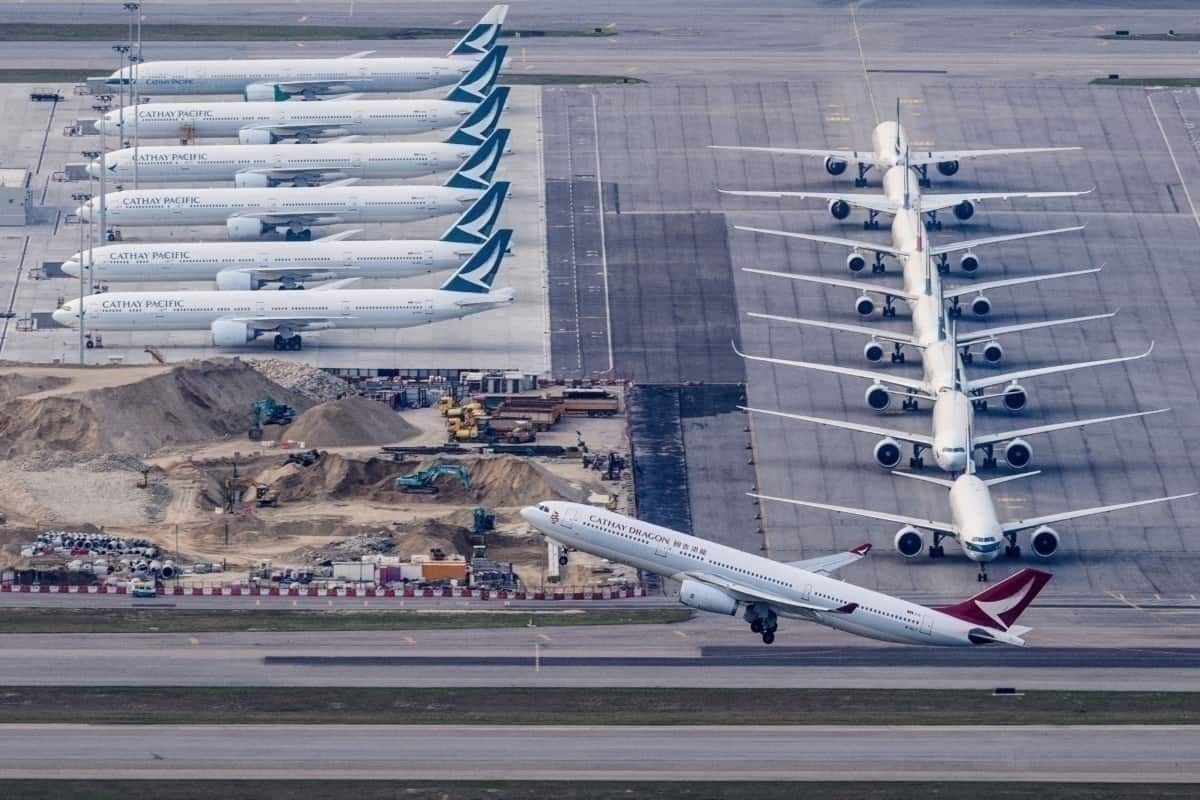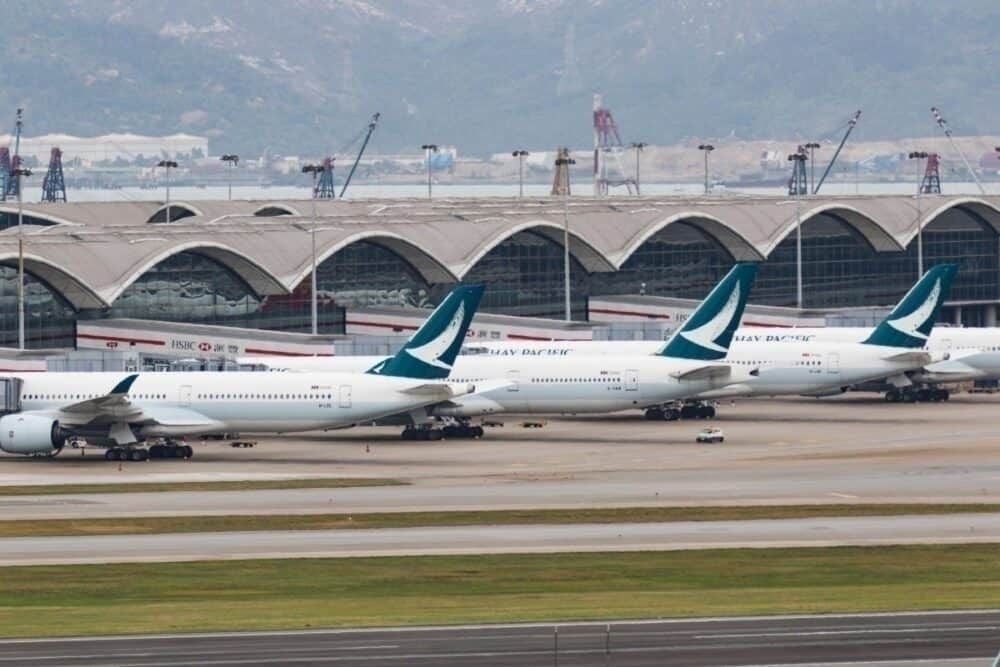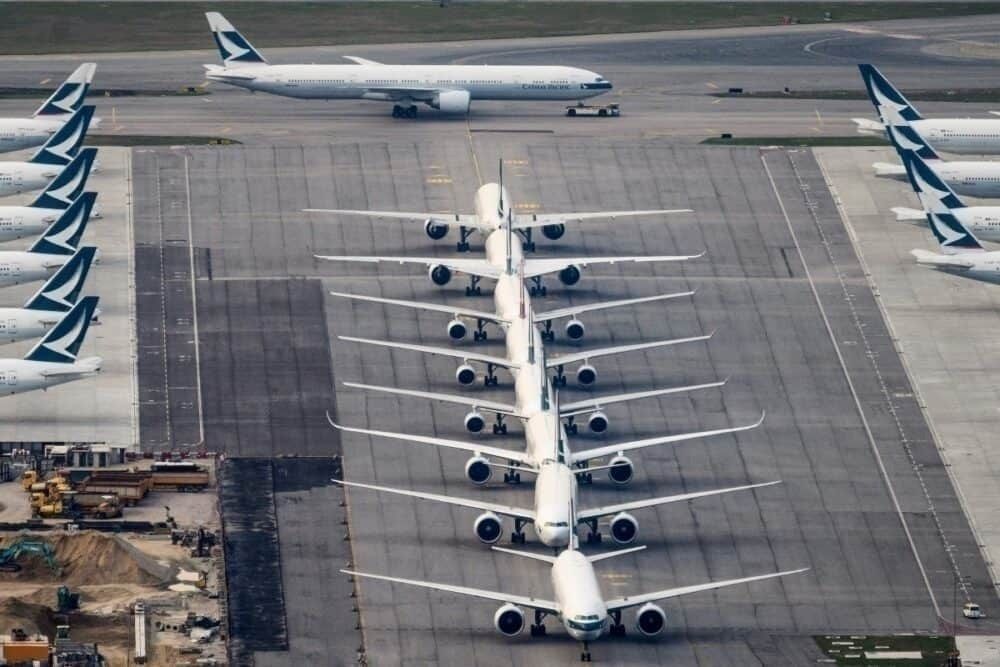Yesterday, August 14th, The Cathay Pacific Group (consisting of Cathay Pacific and Cathay Dragon) released its combined traffic figures for July 2020. The company notes that these numbers reflected the carriers' continued substantial capacity reductions in response to significantly reduced demand. It also adds that travel restrictions and quarantine measures in Hong Kong and other markets are additional significant factors in the disappointing statistics.
Going by the numbers
For Cathay Pacific and its regional affiliate Cathay Dragon, the numbers continue to be down significantly from pre-pandemic levels. For July 2019, the two airlines carried a total of 42,984 passengers. This represents a decrease of 98.7% compared to the same period in 2019.
Aircraft were flying less than a quarter full as the overall passenger load factor was just 23.4%. With the overall July 2019 load factor at 85%, this represents a drop of 62.6%.
Looking at the situation from a year-to-date perspective, the number of passengers carried dropped by 79.4%. The airlines had made significant cuts to their services, representing a 69.9% decrease in capacity and a 76.6% decrease in RPKs when compared to the same period for 2019.
“However, demand tapered down towards the end of the month as new waves of COVID-19 cases arose in numerous countries. As a result, passenger volume increased at a lower rate than capacity for July, and load factor further dipped to 23.4%. There were a few services that performed better than expected comparatively, notably [between Hong Kong and] Xiamen." -Cathay Pacific Group
A very conservative outlook
"The global aviation sector continues to face major headwinds as a result of the COVID-19 pandemic and the associated travel restrictions that have been implemented," the company states.
It also notes that The International Air Transport Association (IATA) has now adjusted its forecast for a return to pre-pandemic levels. While many industry experts and airline leaders had (or continue to have) an estimated three-year recovery period, IATA has revised its own outlook, adding an extra year to its previous estimate.
Cathay Pacific Group hasn't expected much for August either as it adjusted its passenger flights to just 8% of normal capacity. It cites "new waves of COVID-19" emerging in Hong Kong and elsewhere as a critical factor for this conservative outlook. It predicts more of the same for September as well.
Geopolitical tensions
"In addition to the COVID-19 pandemic, we have to contend with a looming global recession and geopolitical tensions," the airline adds in its report. Indeed, these are very real headwinds the airline is facing now and will continue to see in the future. More specific to Cathay Pacific compared to other airlines around the world is the geopolitical factor.
"The Chinese Communist Party has made clear that Hong Kong will never again enjoy the high degree of autonomy that Beijing itself promised to the Hong Kong people and the United Kingdom for 50 years. President Trump has made clear that the United States will therefore treat Hong Kong as 'one country, one system,' and take action against individuals who have crushed the Hong Kong people’s freedoms." -Michael Pompeo, Secretary of State, United States
In recent weeks, the United States has taken 'treasury sanctions' against select individuals in Hong Kong - adding to increased friction and strained relations. As the United States is a significant market for Cathay Pacific, this would most certainly affect air travel demand.
Are all of the above factors (COVID-19, economic depression, and geopolitical disputes) signaling the beginning of the end for Cathay Pacific? Or do you think the airline is resilient enough to weather these storms? Let us know your thoughts in the comments.




